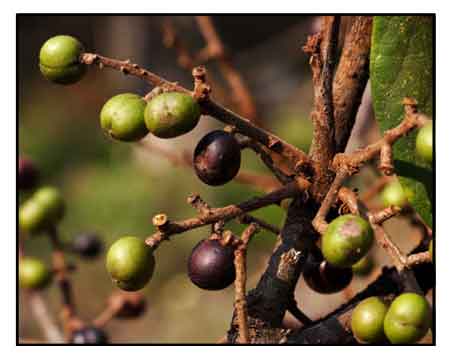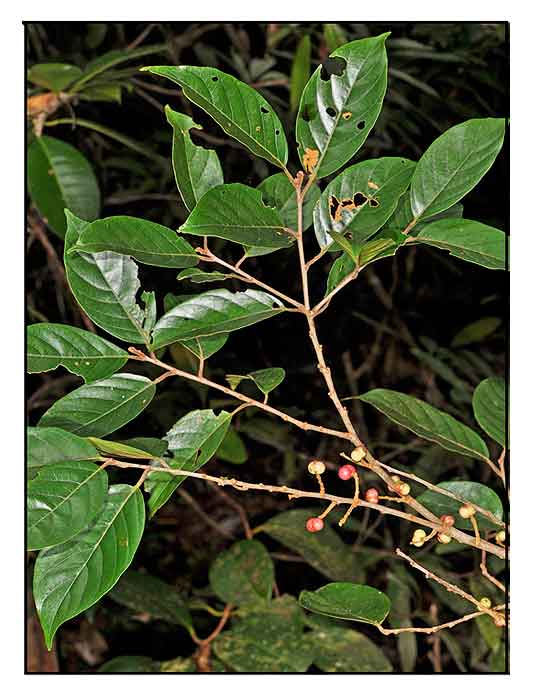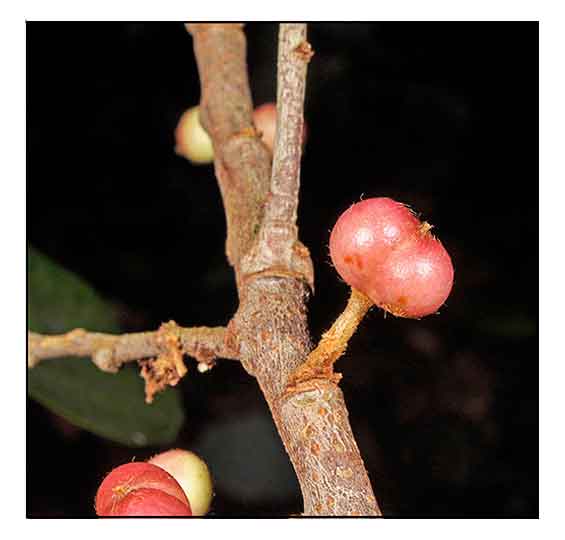
Family • Rosaceae
Kabung
Prunus arborea (Blume) Kalkman
CURRANT LAUREL
| Scientific names | Common names |
| Polydontia arborea Blume | Kabung (Phil., Manobo) |
| Polystorthia arboreum (Blume) Hassk. | Currant laurel (Engl.) |
| Prunus arborea (Blume) Kalkman | |
| Pygeum blumei Teijsm. & Binn. | |
| Accepted infraspecifics | |
| Prunus arborea var. alticola Kalkman | |
| Prunus arborea var. arborea | |
| Prunus arborea var. densa (King) Kalkman | |
| Prunus arborea var. montana (Hook.f.) Kalkman | |
| Prunus arborea var. robusta (Koord. &. Valeton) Kalkman | |
| Prunus arborea var. stipulacea (King) Kalkman | |
| Prunus arborea (Blume) Kalkman is an accepted name. KEW: Plants of the World Online | |
| Other vernacular names |
| BORNEO: Akil, Enkalamos, Jentili, Kalana, Rotang bari, Vongking-vongking. |
| INDONESIA: Moyang, Medang. |
| SARAWAK: Merubik. |
| THAILAND: Taeng chang. |
| TRADE NAME: Tenangau. |
December 2022
![]()
 |
| PHOTOS / ILLUSTRATIONS |
| IMAGE SOURCE: Photo: Rosaceae : Prunus arborea / Fruit / Copyright © 2014 by P B Pelser & J F Barcelona (contact: [email protected])) [ref. DOL81925] / Non-Commercial Use / click on image to go to source page / Phytoimages.siu.edu |
| OTHER IMAGE SOURCE: Photo: Prunus arborea / Fruits and twigs / Non-commericlal use / click on image to go to source page / Copyright © Biotik |
| OTHER IMAGE SOURCE: Photo: Rosaceae : Prunus arborea / Fruit, leaves, twig / © 2014 by P B Pelser & J F Barcelona (contact: [email protected]) [ref. DOL81923] / Non-Commercial Use / click on image to go to source page / Phytoimages.siu.edu |
Additional
Sources and Suggested Readings |
• |
DOI: It is not uncommon for links on studies/sources to change. Copying and pasting the information on the search window or using the DOI (if available) will often redirect to the new link page. (Citing and Using a (DOI) Digital Object Identifier) |
PHOTOS / ILLUSTRATIONS |
| List of Understudied Philippine Medicinal Plants |
• |
 |




